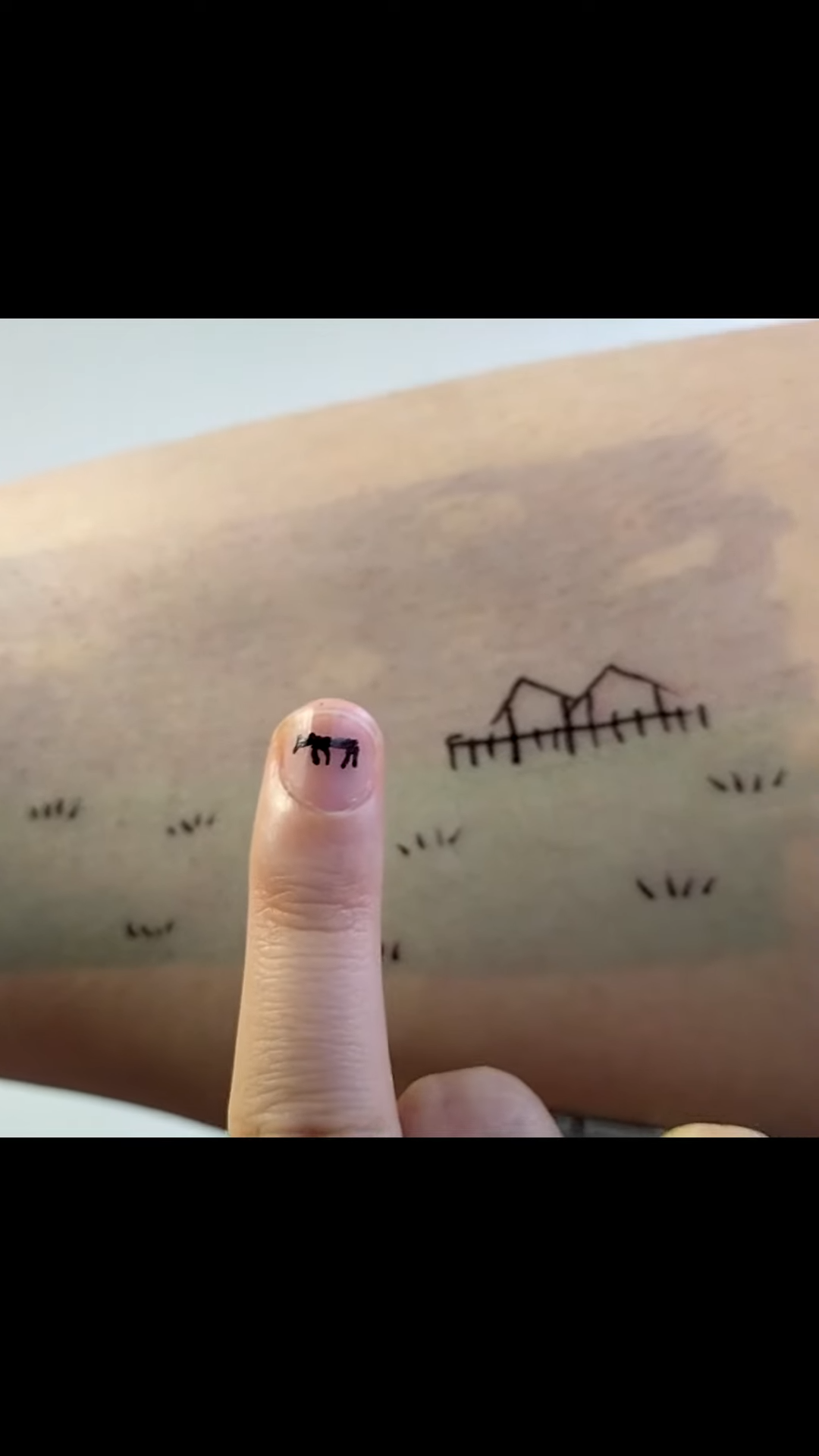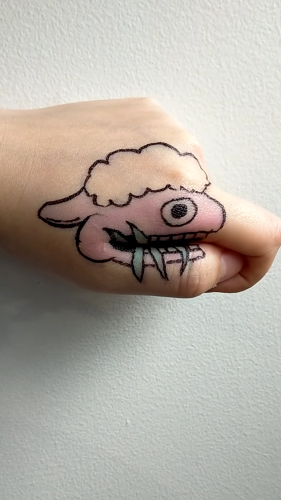
Theme
In response to the theme of " Play and body", I made a video telling the story of The Wolf and the Sheep. The story comes from the internet with some of my freestyle performances during the play. I drew characters and the scene on my body, and used my body as a toy to play with myself. With the magic of play, the outcome became a comedy which I didn’t expect it to be so funny.
.Method
When it comes to Play and Body, my first thought is about the somatosensory game such as my previous work "Giraffe running" which I showed in my presentation. However, I want to try something different this time. I tinkered with the idea by drawing pictures on myself, and I found my hands were great fits for the characters when I opened and closed the space between my thumb and the index finger. So I then found a story having two main characters regarding I have only two hands. I also painted two dots on my nails to mimic the wolf and sheep seen from a distance, and a farm on my leg. Finally, I played with my body parts when reading the stories at the same time. To suit the characters, I even imitate their speaking intonations, although sometimes I confuse the characters.
Context
In Week8, we learned about we can use our body parts to play around, including body parts, senses (sight, hearing) and also other aspects such as emotions and feelings. During the class, there was a question that inspired me, which was:
Moving away from the desktop and screen, how can the physical body provide playful ways of engaging with interactivity, animation and games?
This question made me think of my playing behaviour in my childhood. I liked to pretend I am an imaginary character and behaviour like it when I felt bored, and my brother was not around. By interacting with myself, I felt a sense of fun. Bergen(2002) indicates that pretend play requires the ability to transform objects and actions symbolically; it is furthered by interactive social dialogue and negotiation; and it involves role-taking, script knowledge, and improvisation. Many cognitive strategies are exhibited during pretense, such as joint planning, negotiation, problem-solving, and goal-seeking. In my opinion, I think Pretend Play is a process that is beneficial to increase children's creativity. It not only relieves boredom, but also enhances children's cognitive ability. Of course, this is not just an activity that children can engage in. For adults, playing different roles can also activate cognitive strategies.
Reflection
From the class, I learned different forms of interpretation of the theme. When I listened to my classmates’ presentations in class, I was surprised that the three of us had a diversity of topics and references. I saw one of the people using the image to piece together the shape of the face. So I was motivated to try something I had never done before. Glad I took the plunge, I'm happy with the clumsy performance of "with my own hands," which was a hilarious result I didn't expect.
About This Work
By Ashley (Chun-Yu Chen)
Email Ashley (Chun-Yu Chen)
Published On: 21/10/2022


